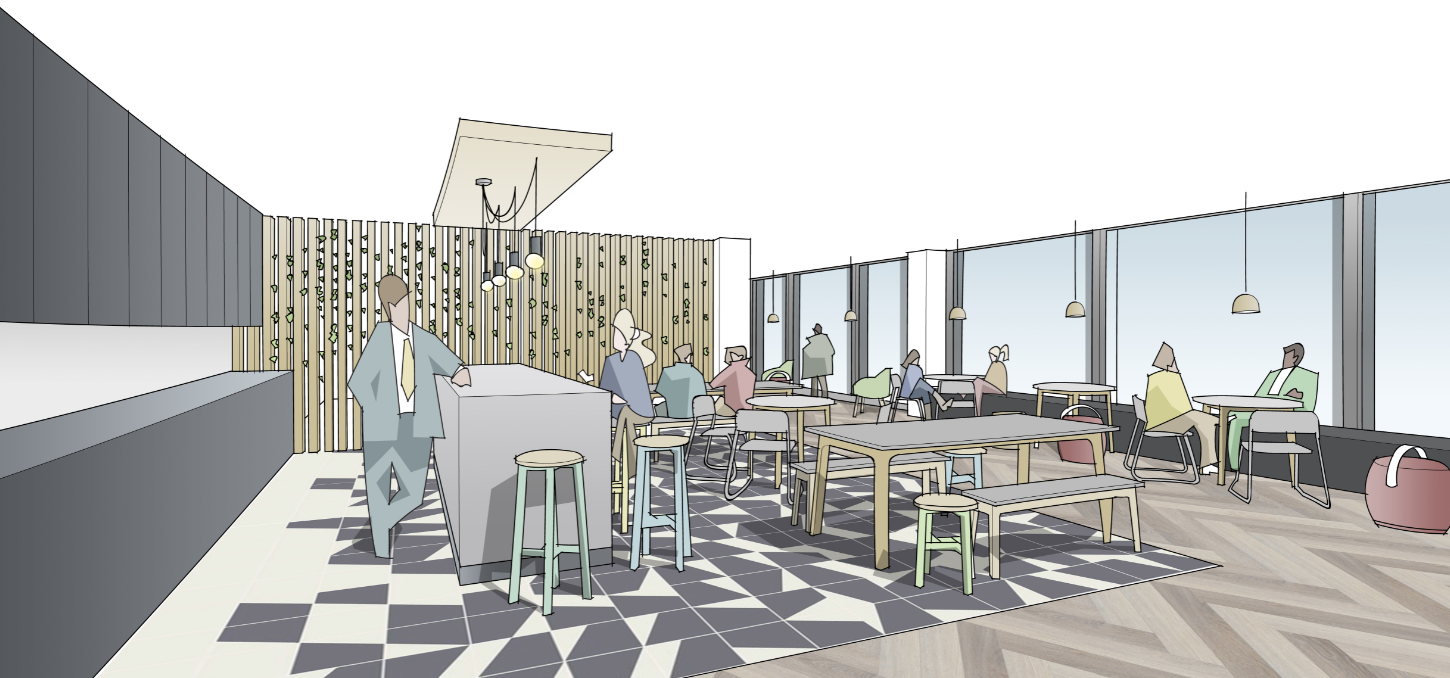Insight
How can Interior Designers improve Health and Wellbeing in Higher Education Spaces?
10 Aug 2022

Cristina Henshaw
Associate - Interior Design
Wellbeing Strategies
Universities are now aiming to encompass 'Wellbeing Strategies' in a bid to be more appealing to potential students and their staff. More funding is being invested into staff training, student support services, sports, society and social group activities, key skills and community led events to ensure wellbeing is at the heart of their values.
The physical environment for students needs to therefore be able to offer flexibility for a vast range of activities and encourage productivity, social integration, relaxation and learning. The quality of the environment that people move through needs to be given as much priority as the formal learning spaces. Who else is better to do this than an Interior Designer?!
How can Interior Designers help?
Interior Design can inform an individuals entire student journey and experience, including anyone who has a permanent workspace at an educational institution. We understand as designers that space, furniture placement and specification, the correct lighting, acoustics and flexibility informs the way a space should or could be used.
Floor finishes can be used to 'zone' spaces and keep furniture in place or act as wayfinding and circulation routes. Lighting can be used to highlight an informal group breakout area as it would in a bar, restaurant or hotel. Furniture can be chosen to direct a person to a specific area for a certain activity. A large table may encourage social integration or group study, however a tall fabric seat back may signify more private conversations. Individual booths or tables will encourage self-learning and high tables can act as touch down areas for a browse on the internet or emails.

All of these ideas have derived from other environments that have naturally become places of work and social integration such as coffee shops. In fact many universities now want to ensure that breakout areas have refreshment facilities or teapoints where people can socialise as they would in an office or at home.

Refreshment facilities encourage social integration, spontaneous collaboration and conversation
Biophilia
Biophilic design has become a major part of our research and we encourage 'bringing the outside in' in all of our projects, not just higher education. This method of improving health and wellbeing for students offers a better connection to nature, through specifying finishes, furniture, plants and materials which mimic those within the natural landscape and environment. Some universities may be situated in areas where there is little outdoor greenery or water and this can be key in offering the users spaces which feel secure, uplifting and calming. As we know, better connections with nature enhance productivity and wellbeing meaning that nature can improve general health, relationships and positive work/life balance. Incorporating elements of greenery can soften a space and offer a better connection with nature.
Wayfinding
Buzzwords and super graphics can really help in assisting users to find their way around a building. The societies and services that universities offer to students need to be welcoming and visible for all students and employees. Interior designers can help to enhance standard signage by making information easy to follow, creative and fun to help guide users to the places they need or want to be. This lowers anxiety levels and allows for a smooth journey to the support that students need.